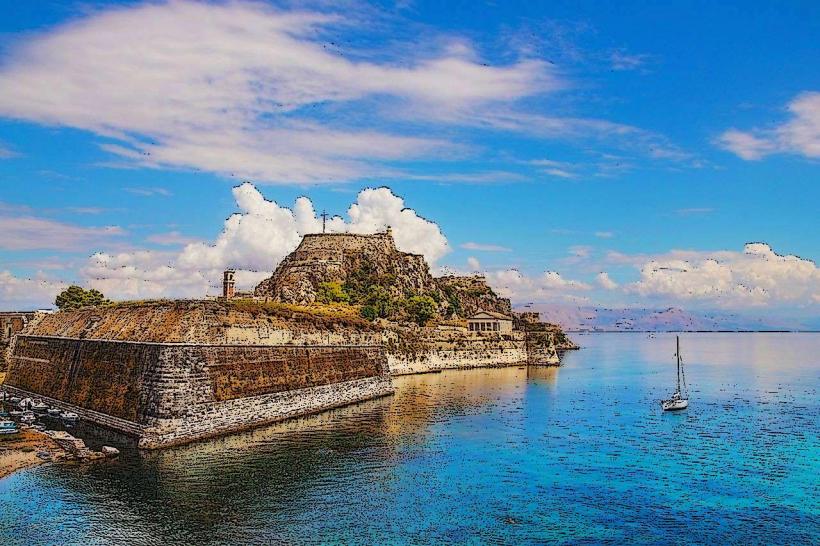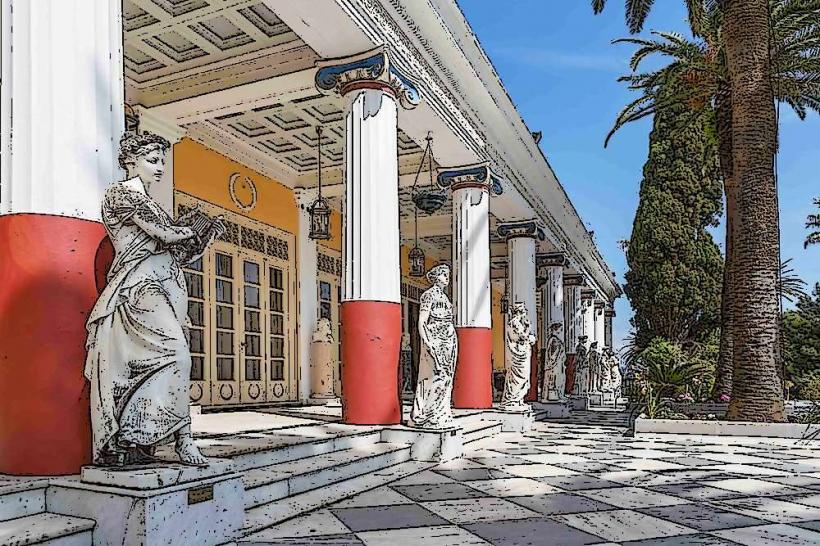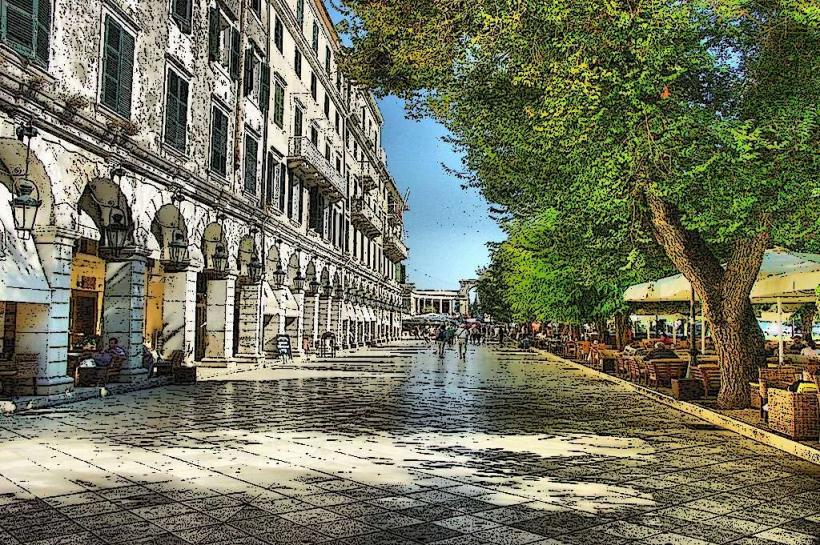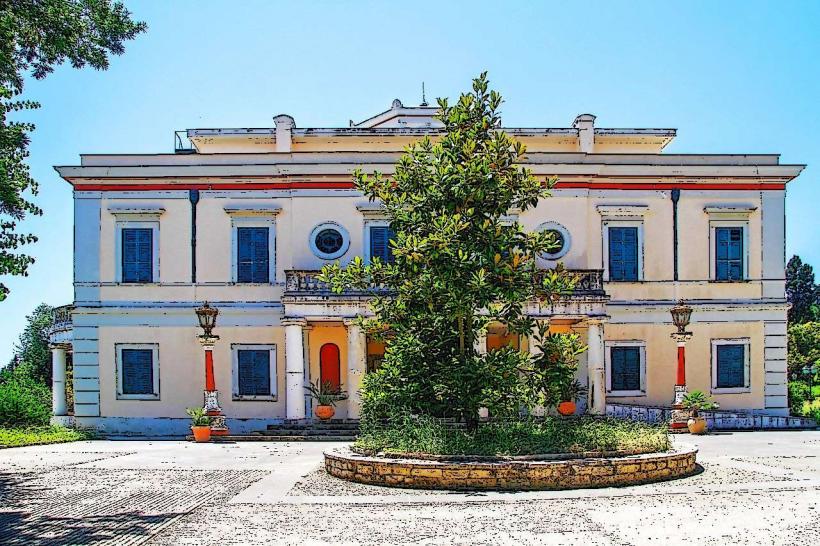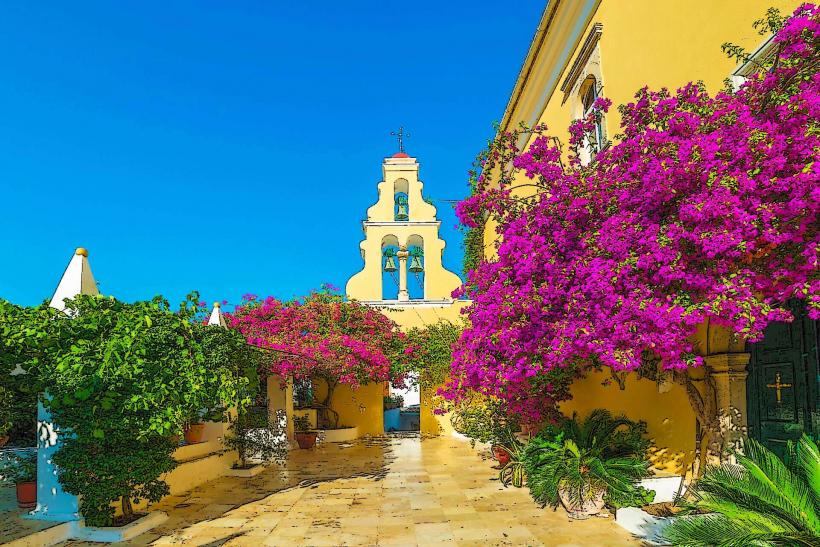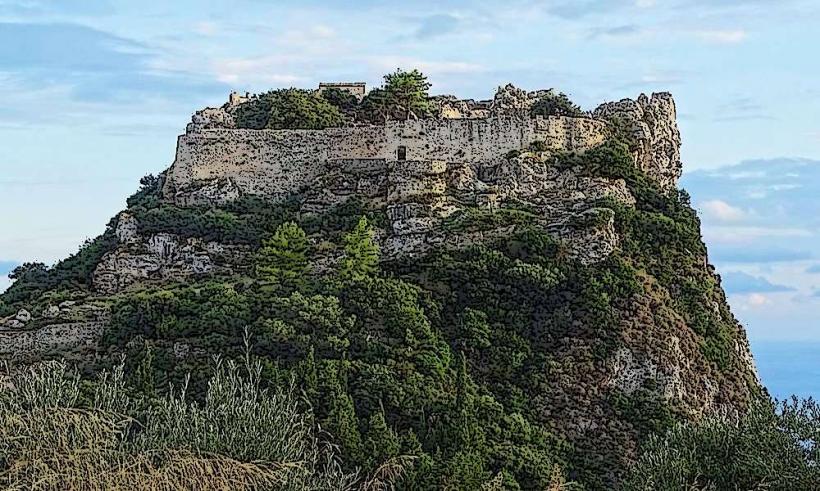Information
Landmark: Corfu Archaeological MuseumCity: Corfu
Country: Greece
Continent: Europe
The Corfu Archaeological Museum is an important cultural institution located in Corfu Town, Greece. It houses a vast collection of artifacts that showcase the rich history and cultural heritage of the island, from its ancient beginnings through to the classical and Hellenistic periods.
Key Features of the Corfu Archaeological Museum:
Historical Background:
- The Corfu Archaeological Museum was established in the early 1960s and is dedicated to preserving and displaying the archaeological treasures of Corfu. The museum is housed in a modern building constructed specifically for this purpose, though its collections are rooted in the island's long history.
- Corfu has been inhabited since prehistoric times, and the museum’s collections span thousands of years, reflecting the island’s strategic location in the Ionian Sea and its interactions with various ancient civilizations, including the Ancient Greeks, Romans, Venetians, and Byzantines.
Architecture:
- The museum building itself is a mix of modern and neoclassical architecture, designed to complement the artifacts it houses. It is a large, spacious facility that allows for the display of many different types of artifacts, from sculptures and pottery to inscriptions and jewelry.
- The museum’s layout is well-organized, with several galleries dedicated to specific time periods and themes in Corfu’s history.
Exhibits and Collections: The museum's exhibits include a wide variety of objects that offer insight into the island's ancient past. Some of the most notable collections are:
The Gorgon Pediment: One of the museum’s most important and famous exhibits, the Gorgon Pediment is a fragment from a temple dedicated to Apollo in Paleopolis, Corfu. It depicts the mythical Gorgon, a creature in Greek mythology whose gaze could turn people to stone. The pediment dates back to the 6th century BC and is considered one of the finest examples of ancient Greek sculpture.
Corfu’s Ancient Coins: The museum houses a significant collection of ancient Greek coins from the island of Corfu. These coins provide important information about the political, economic, and cultural history of Corfu during ancient times.
Corfu’s Bronze Age: The museum’s collection also includes items from the Bronze Age, including tools, pottery, and figurines that shed light on life on the island before the rise of classical Greek civilization.
Sculptures: The museum features a number of sculptures from various periods, including classical and Hellenistic works. These include statues of gods, heroes, and important public figures from Corfu's ancient history.
Pottery: The museum displays a wide range of ancient Greek pottery, including vases, kraters, and amphorae, many of which were used for everyday activities or ritual purposes. The pottery offers valuable insights into the artistic traditions and cultural practices of ancient Corfu and the broader Greek world.
Inscribed Tablets: The museum contains a number of inscribed stone tablets, some of which are written in ancient Greek and provide important information about Corfu's ancient legal and political systems.
Byzantine and Venetian Artifacts: Although the museum’s main focus is on ancient Greek history, it also features exhibits from later periods, including the Byzantine and Venetian periods, highlighting Corfu’s ongoing cultural importance throughout history.
Paleopolis and Kanoni Exhibits:
- Some of the most significant finds in the museum come from the Paleopolis area of Corfu, an ancient city located near the Kanoni area. The remains of several temples, public buildings, and private residences have been uncovered in this area. Many of the objects found at the site, including sculptures and inscriptions, are displayed in the museum.
- The Paleopolis site is closely associated with the worship of Apollo, and it was an important religious and cultural center in ancient Corfu.
Educational and Cultural Role:
- The museum plays an important role in the education of visitors, offering informative descriptions of the exhibits in several languages, including Greek and English. It also offers a variety of educational programs and events, such as workshops and lectures, aimed at increasing awareness of Corfu’s rich cultural heritage.
- Temporary exhibitions are often held, focusing on specific themes or showcasing recent archaeological discoveries on the island.
Visitor Experience:
- The Corfu Archaeological Museum is a must-visit for anyone interested in the island’s history, as it provides a comprehensive overview of its development from ancient times to the more modern periods.
- The museum's layout allows for a leisurely tour through Corfu's past, with clear displays and informative signage making it easy to understand the context of the exhibits.
- The museum also offers a gift shop where visitors can purchase souvenirs related to Corfu’s history, including replicas of ancient artifacts and local handicrafts.
Nearby Attractions:
- The museum is located near Corfu Town, a short distance from several other important attractions, such as the Old Fortress, Spianada Square, and the Liston Promenade.
- Visitors can easily combine a visit to the museum with a tour of the town, enjoying the historic sites and vibrant atmosphere of Corfu’s Old Town, which is a UNESCO World Heritage site.
Conclusion:
The Corfu Archaeological Museum is an essential destination for anyone interested in understanding the rich history of Corfu and its importance in the ancient Greek world. With its fascinating collections, including important artifacts such as the Gorgon Pediment, ancient pottery, and sculptures, the museum provides a comprehensive look at the island’s cultural and historical development. Whether you’re a history enthusiast, an art lover, or simply curious about the past, the museum offers a deep and insightful experience into Corfu’s ancient legacy.

